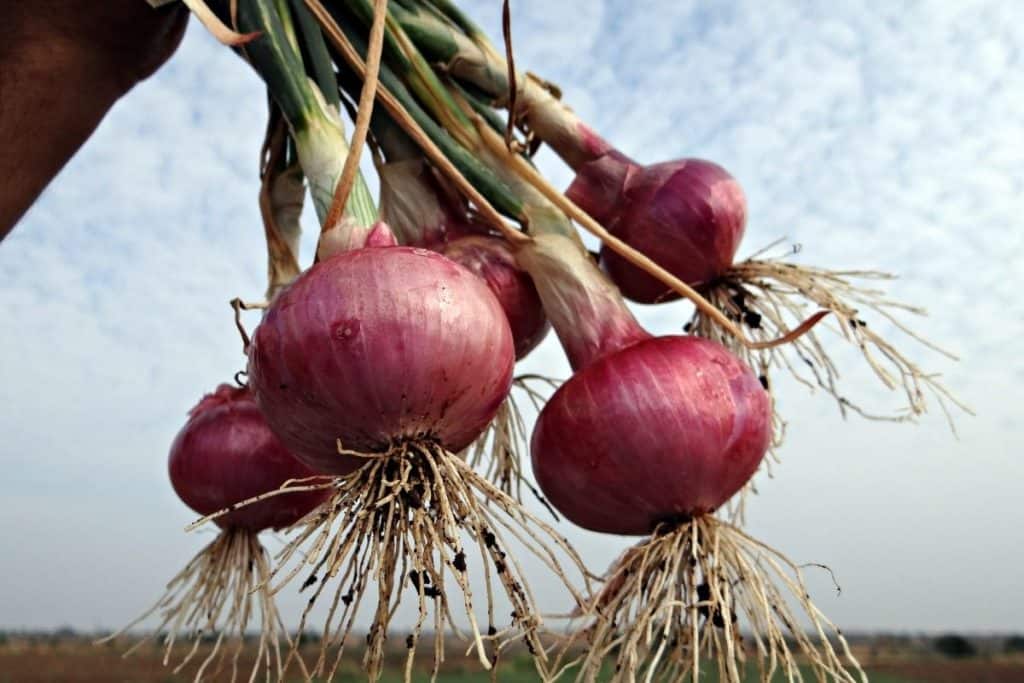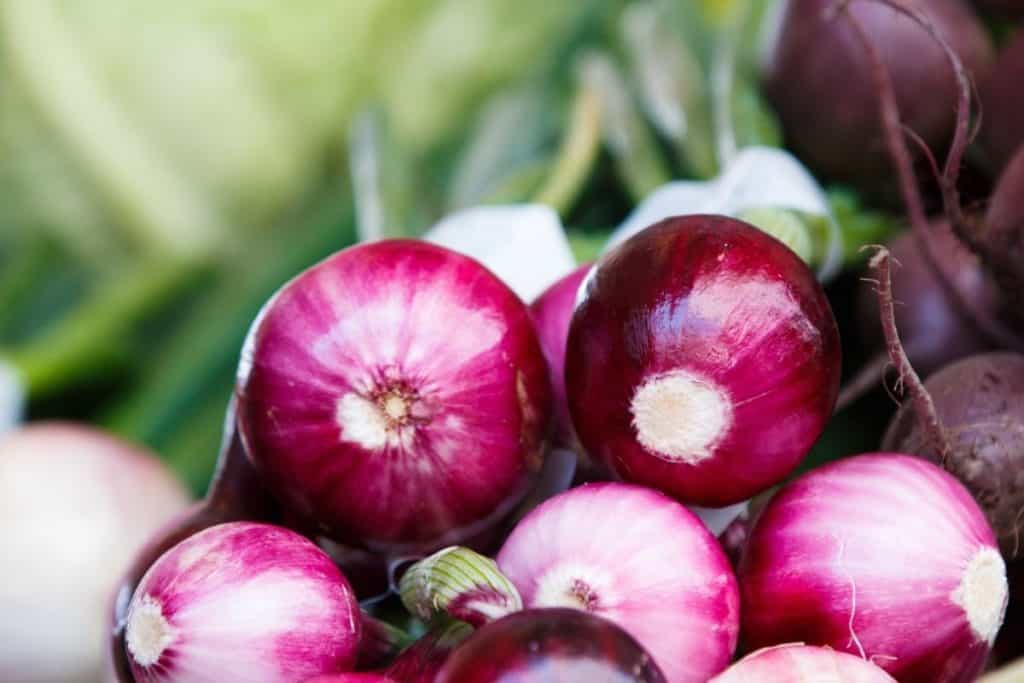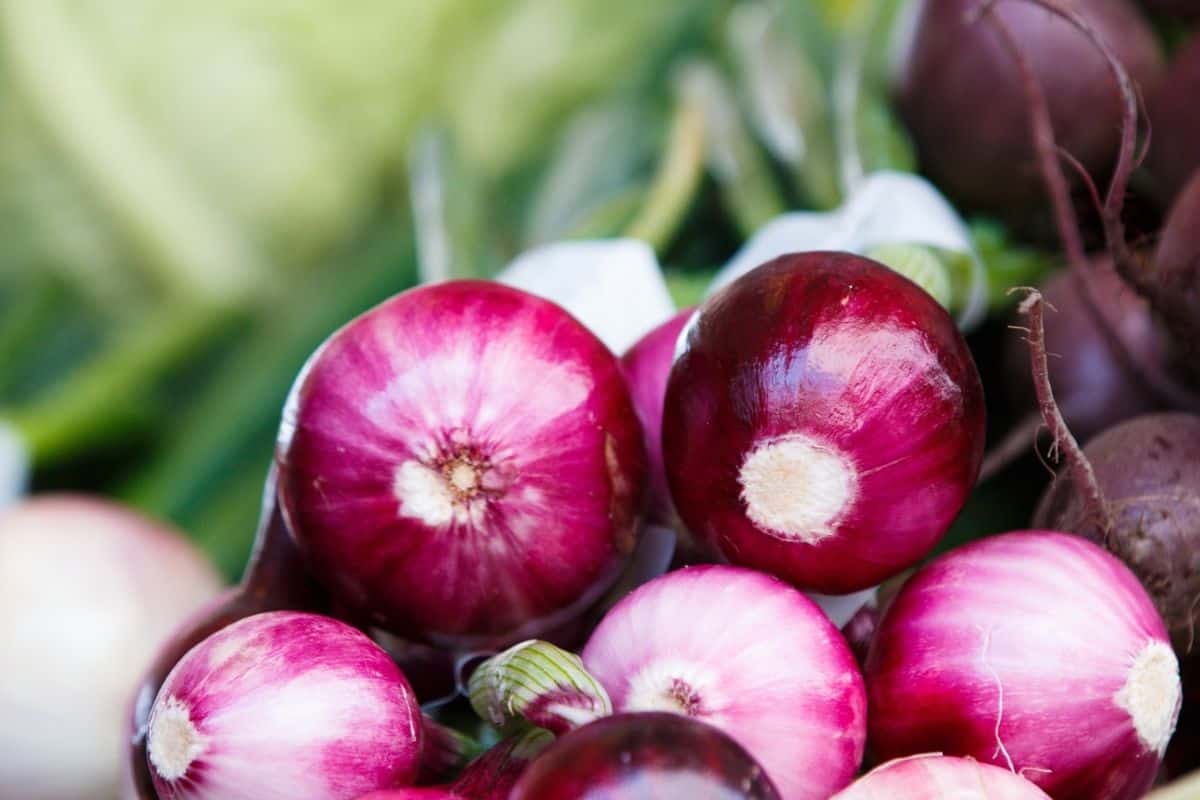Onions are a very popular vegetable. People love its taste and texture. It is great to add to dishes such as spaghetti bolognese, pizza, and chicken curry.
But did you know that onion is also known as a root vegetable? This confusion has led to some interesting questions. For example, does onion stem or root? Is onion a stem or a root?
Luckily, we are here to clarify any questions you may have surrounding onions.
What Are Onions?
Onions are the bulb of a plant called Allium cepa. They grow in clusters at the top of the stem. The leaves are green and round with four lobes.
When they mature, the white flowers appear on the top of the cluster. After flowering, the fruits develop into seeds. These seeds are small and brownish-yellow.
The word onion comes from the Latin word alliaceum which means garlic. In ancient times, people used it for medicinal purposes. However, it was not until the 18th century that people started using it for cooking.
Onions have quite a pungent taste that can add flavor to a wide range of dishes. You can use them raw, cooked, sautéed, grilled, fried, baked, boiled, pickled, or even dried. Raw onions are particularly great in salad, though red onions are more commonly used in this dish.
In terms of their nutrition, onions are an excellent source of vitamin C, fiber, potassium, folate, iron, magnesium, calcium, copper, manganese, phosphorus, zinc, protein, and riboflavin. Consequently, they can also add to the nutritional benefits of a meal.
Onions belong to the lily family and are classified as Allium cepa. There are many varieties of onions including:
White Onions – These onions are milder than yellow onions.
Yellow Onions – These onions are sweeter than white onions. They’re best cooked.
Red Onions – These onions are sweet with a strong onion smell.
What Are Roots?
To understand which category onions fit into, you first need to understand what roots and stems are. Roots are the underground part of plants.
They provide support for the plant above ground. They help the plant absorb water, nutrients, and minerals. Some of these include:

Arbuscular mycorrhizal fungi (AMF) – These fungi live inside the soil and connect to the roots of plants. They help plants get access to nitrogen and other nutrients.
Arbuscular Mycorrhizal Fungi (AMF) – These fungi live inside the soil and connect to the roots of plants. They help plants get access to nitrogen and other nutrients.
Rhizobia Bacteria – These bacteria live in the soil and enter the roots of plants. Once there, they fix atmospheric nitrogen into ammonia. Plants then take up the ammonia through their leaves.
Phosphorus – This mineral helps plants produce energy. It’s also important for photosynthesis.
Potassium – This nutrient helps regulate cell pressure. It also makes the cells stronger.
What Are Stems?
In comparison, stems are the parts of a plant that grow above ground. They are typically long, slender structures that contain sap. They are found near the base of the plant. Some examples of stems include:
Branches – These branches are attached to the main trunk of the plant. They are usually flexible and bend easily.
Leaves – These are the leaves of the plant that are located directly below the flower. They are generally flat and broad.
Flowers – These are the reproductive organs of plants. They are made up of petals, sepals, stamens, pistils, and ovaries.
Trunks – These are the thick, woody portions of the stem. They often bear fruit.
Stems come in different sizes and shapes.
For example, some have short, fat trunks while others have thin, tall ones. Stems play a vital role in supporting the growth of plants. They allow plants to absorb sunlight, store food, and transport water.
What Are The Differences Between Stems And Roots?
Though they may sound very similar, the differences between stems and roots are quite simple. In general, stems are longer than roots. Also, roots tend to be thicker and wider than stems.
They also have different functions. Roots are underground, where they can supply water to the plant. This role will be especially important for storage roots.
Meanwhile, stems are positioned above the root. It is from stems that leaves and branches will grow.
However, it’s not always easy to tell whether something belongs to the root or stem category. Sometimes, the distinction isn’t clear-cut, as is the case with onions.
Onions: Stems Or Roots?
Now for the main event: are onions stems or roots? Actually, they are neither. They are, in fact, a variety of tunicated bulbs.
Essentially, tunicated bulbs are a type of root that has been modified by being wrapped around itself. Onions are one of the most common types of tunicated bulbs. Other examples include garlic, leeks, shallots, scallions, chives, and spring onions.
These papery wrappings protect the onion, stopping it from being damaged. This defensive outer layer may add to the confusion surrounding the classification of onions.
Though there is a common misconception that onions grow underground, they actually sit at the soil surface. In this position, they can be exposed to harsh weather conditions, such as cold temperatures.
When an onion sits on top of the soil, it can be more susceptible to damage. To prevent this, onions are sometimes grown in greenhouses where they receive protection.
Frequently Asked Questions
Can You Eat Raw Onions?

Yes, it is perfectly fine to eat raw onions. Many people enjoy the flavor of raw onions, particularly red onions. In fact, their flavor tends to be most potent when raw.
However, if you do so, make sure to wash them thoroughly first. You should remove any dirt or debris before consuming. If your hands become dirty after handling the onions, wash them.
Can You Eat Onions When You Have A Cough?
Eating onions when you have a cold won’t harm you. Some studies suggest that onions may help reduce symptoms associated with a cold.
They are also believed to be beneficial to your immune system, making them a good choice for colds or coughs.
Final Thoughts
So, now you know how to identify whether an onion is a stem or a root!
You should be able to confidently answer questions like “What is the difference between a stem and a root?” and “Are onions stems or roots?”
Hopefully, you will have been as interested in the answers to these questions as we were.

